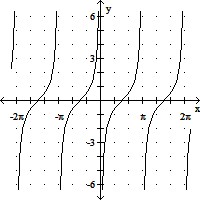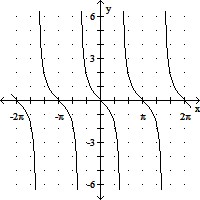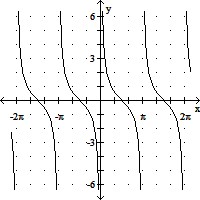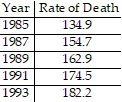Find the volume of the circular cylinder. Use 3.14 or  for ? as indicated.Use 3.14 for ?.
for ? as indicated.Use 3.14 for ?.
A. 339.12 cm3
B. 8138.88 cm3
C. 2034.72 cm3
D. 678.24 cm3
Answer: C
You might also like to view...
Solve the inequality. Give the solution set in both interval and graph forms.-6y - 3 > -7y - 15![]()
A. (-18, ?)![]()
B. (-12, ?)![]()
C. (-?, -12)![]()
D. (-?, -18)![]()
Match the function with its graph.1) y = - tan  2) y = tan
2) y = tan  3) y = - cot
3) y = - cot  4) y = cot
4) y = cot  A) B)
A) B)

height="200" width="200" />C) D)

A. 1A, 2D, 3B, 4C
B. 1D, 2A, 3C, 4B
C. 1A, 2B, 3C, 4D
D. 1C, 2B, 3D, 4A
Provide an appropriate response.Let an= a1+ (n - 1)d1and bn= b1+ (n - 1)d2be arithmetic sequences. Given that  is also an arithmetic sequence, find c1.
is also an arithmetic sequence, find c1.
A. a1+ b1+ r(d1+ d2) B. a1+ b1 C. a1+ b1+ d1+ d2 D. a1+ r?b1
Solve the problem.The rates of death (in number of deaths per 100,000 population) for 20-24 year olds in the United States between 1985-1993 are given below. (Source: NCHS Data Warehouse)  A logarithmic equation that models this data is y = 57.76 + 48.56 ln x where x represents the number of years since 1980 and y represents the rate of death in that year. Use this equation to predict the year in which the rate of death for 20-24 year olds first exceeds 200.
A logarithmic equation that models this data is y = 57.76 + 48.56 ln x where x represents the number of years since 1980 and y represents the rate of death in that year. Use this equation to predict the year in which the rate of death for 20-24 year olds first exceeds 200.
Fill in the blank(s) with the appropriate word(s).